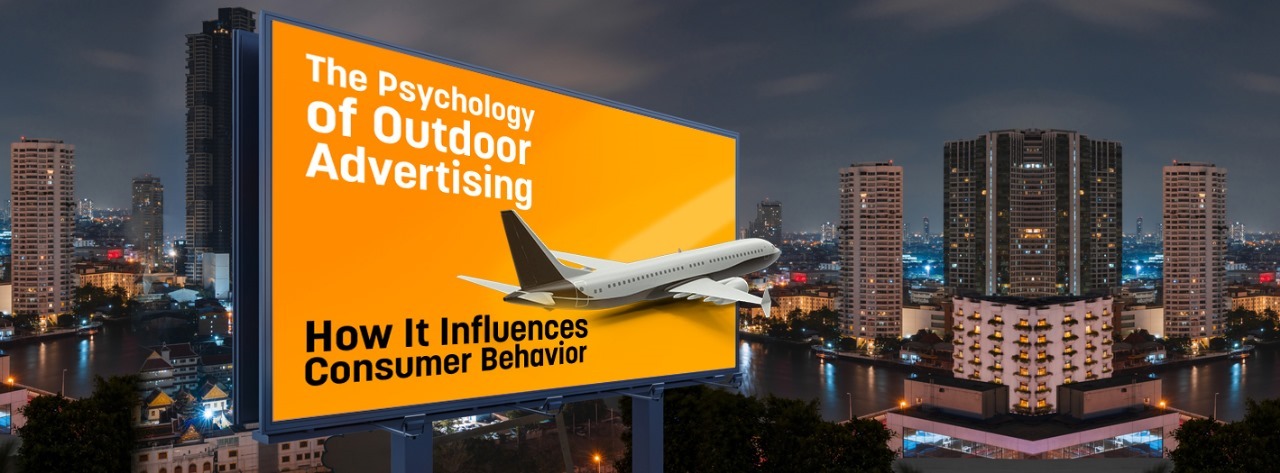The Psychology of Outdoor Advertising: How It Influences Consumer Behavior
- By CHAMS DIGITAL
- February 05 , 2024
Outdoor advertising is a powerful tool that taps into the psychology of consumers, influencing their behavior in subtle yet significant ways. From billboards to bus shelters, these visual stimuli play a crucial role in shaping perceptions and driving purchasing decisions. Let's delve into the psychology behind outdoor advertising and explore how it leaves a lasting imprint on consumers minds.
- Attention-Grabbing Visuals: Outdoor advertising leverages eye-catching visuals and bold graphics to capture the attention of passersby. Human brains are naturally drawn to vibrant colors and striking images, making outdoor ads an effective tool for creating initial brand awareness.
- Location Matters: The strategic placement of outdoor ads in high-traffic areas plays a crucial role in influencing consumer behavior. Whether it's a busy intersection or a popular public space, repeated exposure to a brand message in a specific location can lead to increased brand recall and recognition.
- Subliminal Messaging: Outdoor ads often incorporate subtle messaging that taps into the subconscious mind. The repetition of slogans or logos can create a sense of familiarity, fostering a positive association with the brand without consumers consciously realizing it.
- Emotional Appearance: Successful outdoor advertisements evoke emotions that resonate with the target audience. Whether it's humor, nostalgia, or a sense of aspiration, emotional connections formed through outdoor advertising can influence purchasing decisions and brand loyalty.
- Influence on Impulse Buying: Outdoor advertising has a direct impact on impulse buying behavior. The immediate nature of outdoor ads, combined with the consumer's proximity to retail spaces, can prompt spontaneous purchases as individuals are swayed by the visual cues and messages presented.
- Cognitive priming: Outdoor advertising primes the cognitive processes of consumers by introducing and reinforcing brand elements. This priming effect can enhance the effectiveness of other marketing channels, creating a cohesive brand image and increasing the likelihood of consumers choosing a particular product or service.
- Social Validation: Humans are social beings, and outdoor ads often incorporate elements of social validation. Displaying images of happy customers or emphasizing a brand's popularity can trigger the psychological phenomenon of social proof, influencing individuals to align themselves with a product or service.
- Establishing Trust: Consistent outdoor advertising builds trust over time. When consumers repeatedly encounter a brand message in various outdoor locations, it fosters a sense of reliability and credibility, leading to increased confidence in the brand and its offerings.
- Call to Action: Outdoor ads are effective at prompting immediate action. Whether it's encouraging consumers to visit a website, participate in a promotion, or visit a physical store, a well-crafted call to action in outdoor advertising can drive consumer engagement and conversion.
- Integration with Digital Channels: Outdoor advertising seamlessly integrates with digital channels, creating a multi-platform marketing approach. QR codes, hashtags, or social media handles displayed on outdoor ads encourage consumers to connect online, extending the reach and impact of the campaign beyond the physical space.
In conclusion, understanding the psychology behind outdoor advertising allows marketers to create impactful campaigns that resonate with consumers, influence their decision-making processes, and ultimately drive desired behaviors. The combination of visual appeal, strategic placement, emotional connections, and integrated messaging makes outdoor advertising a powerful tool in shaping consumer behavior.
